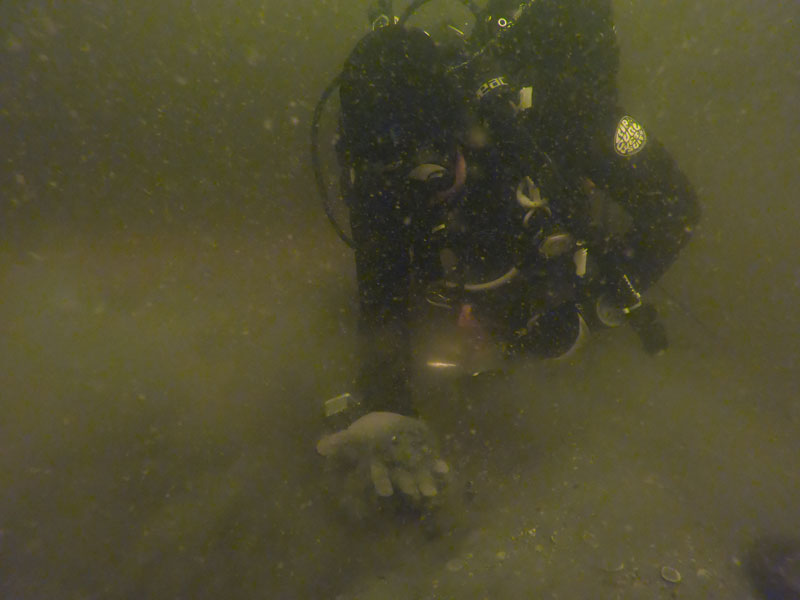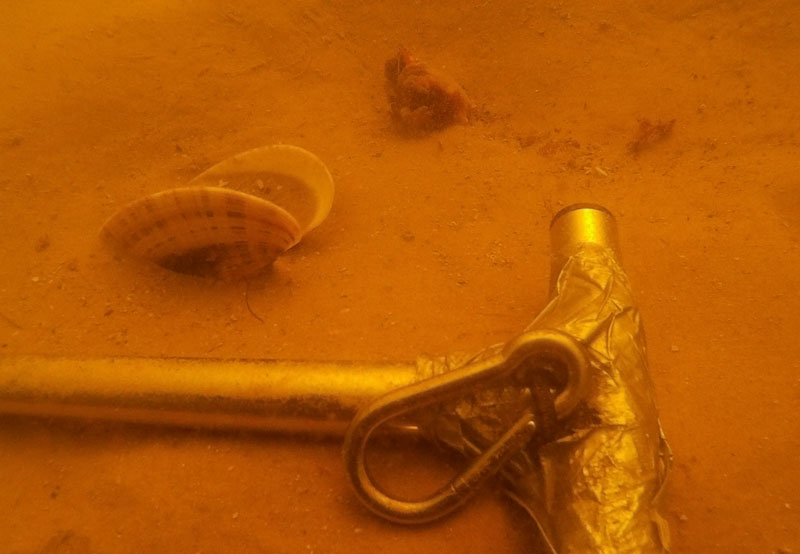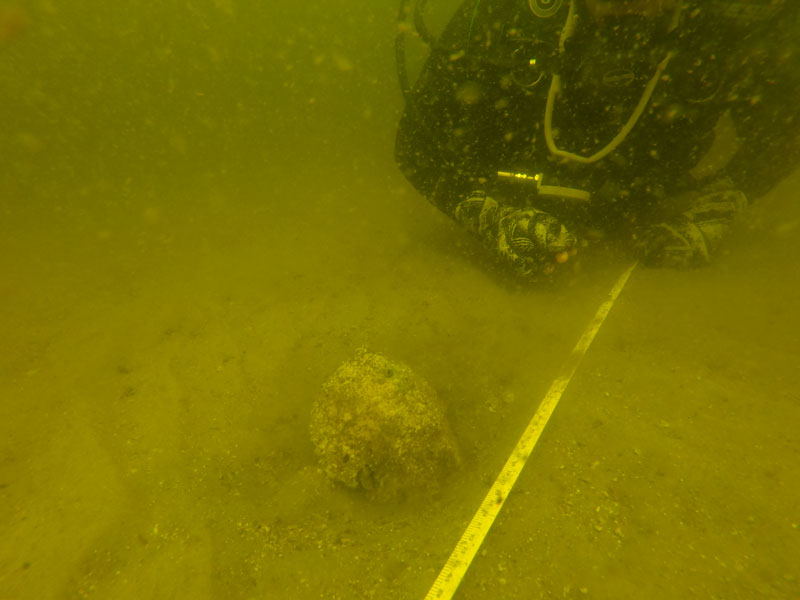
By Matthew Newton - University of Florida's Laboratory of Southeastern Archaeology
After using acoustic remote sensing to map the Marine Archaeological Investigation and Habitat Mapping of the Paleo-Suwannee River project study area at the mouth of the Suwannee River in the Fall of 2021, our team is now conducting dives to explore the site’s archaeological potential. Diving surveys began on February 22, 2022. We first investigated 15 primary targets that were identified from the raw acoustic data collected in the fall and two additional targets at Hedgemon Reef and Red Bank Reef.
During the investigations in February, divers searched concentric circles in 1 to 2-meter (3.3 to 6.7-foot) increments until a 12 to 18-meter (39.4 to 59.1-foot) radius had been reached. In some cases, multiple searches were conducted in the vicinity of identified targets, resulting in multiple overlapping circles covered. The circle searches were the most appropriate (and safest) way to conduct surveys during this time since water clarity was most often very poor due to prevailing surface wind currents.

Sediment composition can be estimated underwater. A few of the attributes we are documenting are the size of the individual grains, the consistency of the sediment, and the presence or absence of marine and/or freshwater mollusks. Image courtesy of Trevor Johnston. Download largest version (4.4 MB).
We visited an interesting linear feature identified in the acoustic data in late March. Divers performed many transects across the feature and used a sediment probe to document the uppermost 15 centimeters (6 inches) of sediment cover. This information will be compared to acoustic data and satellite imagery to see if ground truthed sediment patterns can explain some of the spatial patterns observed in the remote sensing data.
At the beginning of April, 41 secondary targets were added for diver investigation after analyzing the sidescan sonar data collected in the fall. The investigation of these targets in April and May was facilitated by much better water clarity than what was encountered in February and March, allowing for videos to be recorded in many areas under investigation.

The sediment probe used during the Marine Archaeological Investigation and Habitat Mapping of the Paleo-Suwannee River project can also serve as a scale, or a north arrow, for reference. The reddish haze is caused by tannic acid and suspended particulates discharged by the Suwannee River, especially after a heavy rain. Image courtesy of Matt Newton. Download largest version (4.4 MB).
In mid-May, after having completed the characterization of the 41 secondary targets, we made the most of the good water clarity by returning to the linear feature that was visited earlier. Systematic tight transects were followed during which divers would fan shallow (less than 20-centimeter/7.9-inch) holes, record the composition of the sediments, and note the presence or absence of humic soil and marine bivalves. Over two weeks, a total of 28 linear kilometers (17.4 miles) were surveyed.
In June, after consulting different stakeholders, we identified new targets, including a segment of the infilled Paleo-Suwannee channel of approximately 80 x 200 meters (26 x 656 feet) that is visible in satellite imagery and previously collected acoustic data. One of the targets of interest was perhaps an old channel marker buoy, dock structure, or dislodged pieces of a shrimp trawler that had washed ashore during a heavy storm. The location and orientation in which these were found, the mechanical saw cuts observed on them, the concrete material, and the presence of rope suggest that the features are modern.
For the channel, it was interesting to discover that it is observable to the scuba diver only by sediment composition and the maximum depth of sediment and not by the shape or appearance of the seafloor. Margins surrounding the infilled river channel contain humic “fluff,” marls, and a dense concentration of marsh clams and other marine bivalves. Areas of diffused boundaries are present in the upper 15 centimeters (6 inches) of the sediment profile as dark, humic, and sandy soils.

The Marine Archaeological Investigation and Habitat Mapping of the Paleo-Suwannee River project dive teams orient a baseline of 50-meter (164-foot) length, then conduct line searches at every 5 meters (16 feet) along the baseline. Image courtesy of Cole Tillman. Download largest version (4.8 MB).
The final phase of the diver investigations, to start in late July, will involve sediment coring at 30 locations within the project area. Teams of two divers will take the core samples: aluminum coring pipes will be driven with a 10-pound kettlebell and then extracted using a high lift farm jack. The core samples will be taken to the University of Florida for analysis. The analysis of the sediment cores will determine the depth of the sediments and to what extent we can project our models to other locations. We are hopeful that the sediment cores will provide us with a detailed story of sedimentation processes in our study area. A detailed sediment map of the area will be produced after fieldwork is completed, further documenting the relict course of the now submerged Suwannee River.
Ultimately, this underwater archaeological investigation of the Paleo-Suwannee River channel and its surroundings is expected to yield critical new information about potential sites of cultural heritage, which might contribute to the area being considered an Underwater Archaeological Preserve.
Published August 10, 2022